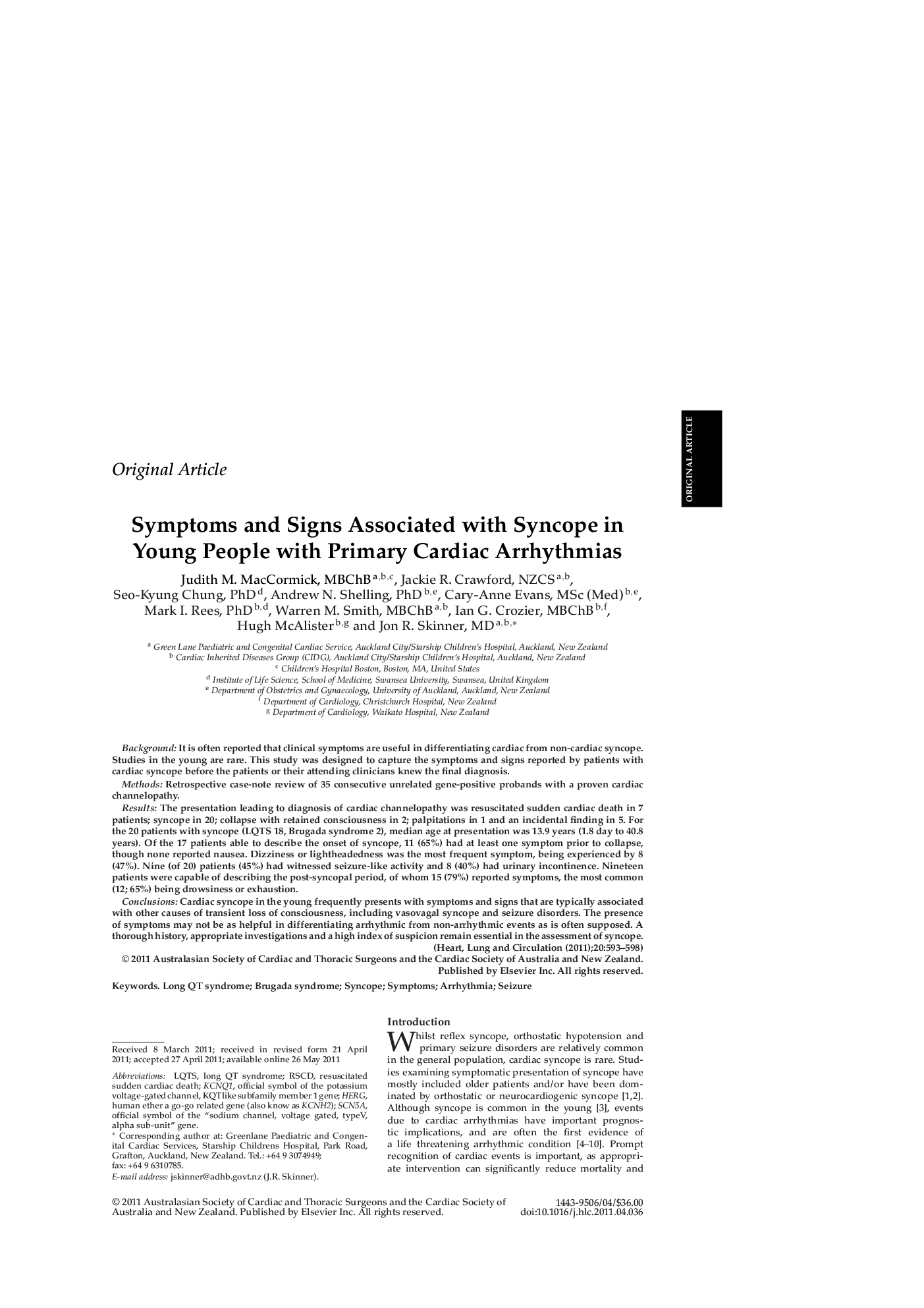| Article ID | Journal | Published Year | Pages | File Type |
|---|---|---|---|---|
| 2918667 | Heart, Lung and Circulation | 2011 | 6 Pages |
BackgroundIt is often reported that clinical symptoms are useful in differentiating cardiac from non-cardiac syncope. Studies in the young are rare. This study was designed to capture the symptoms and signs reported by patients with cardiac syncope before the patients or their attending clinicians knew the final diagnosis.MethodsRetrospective case-note review of 35 consecutive unrelated gene-positive probands with a proven cardiac channelopathy.ResultsThe presentation leading to diagnosis of cardiac channelopathy was resuscitated sudden cardiac death in 7 patients; syncope in 20; collapse with retained consciousness in 2; palpitations in 1 and an incidental finding in 5. For the 20 patients with syncope (LQTS 18, Brugada syndrome 2), median age at presentation was 13.9 years (1.8 day to 40.8 years). Of the 17 patients able to describe the onset of syncope, 11 (65%) had at least one symptom prior to collapse, though none reported nausea. Dizziness or lightheadedness was the most frequent symptom, being experienced by 8 (47%). Nine (of 20) patients (45%) had witnessed seizure-like activity and 8 (40%) had urinary incontinence. Nineteen patients were capable of describing the post-syncopal period, of whom 15 (79%) reported symptoms, the most common (12; 65%) being drowsiness or exhaustion.ConclusionsCardiac syncope in the young frequently presents with symptoms and signs that are typically associated with other causes of transient loss of consciousness, including vasovagal syncope and seizure disorders. The presence of symptoms may not be as helpful in differentiating arrhythmic from non-arrhythmic events as is often supposed. A thorough history, appropriate investigations and a high index of suspicion remain essential in the assessment of syncope.
